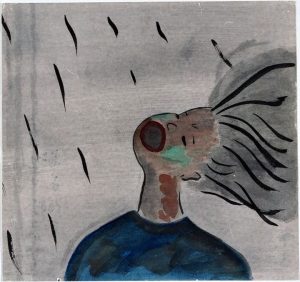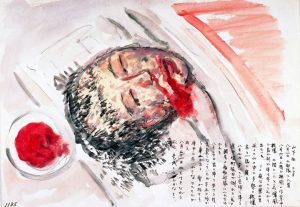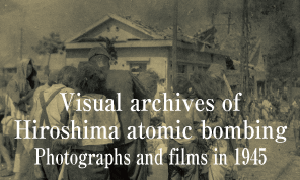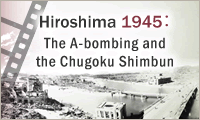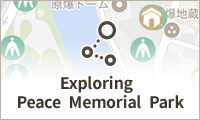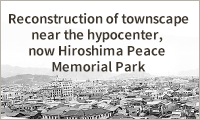Documenting Hiroshima 80 years after A-bombing: In June 1974, call for submission of drawings of A-bombing from survivors begins
Apr. 23, 2025
A total of 2,225 drawings depicting the horrors of the atomic bombing collected
by Minami Yamashita, Staff Writer
In June 1974, the Chugoku regional head office of NHK (Japan Broadcasting Corporation), now NHK Hiroshima Station, launched a campaign to solicit drawings depicting memories of the atomic bombing from survivors. As the 30th anniversary of the bombing was approaching, there was concern memories of the event might fade. After publicizing the campaign through local programs and the news, the station received drawings of the horrific scenes etched in the minds of survivors.
Akiko Takakura (died in 2020 at the age of 94), who experienced the atomic bombing when she was 19, drew two pictures. Hiroaki, 67, her oldest son who lives in Hiroshima’s Asakita Ward, remembers his mother painting in the living room of their home. He was a high school student at the time. She did not speak much about her experience to her family. “She seemed to have survivor’s guilt,” he said, looking back.
According to her account before her death, she was at her workplace, the headquarters of Geibi Bank (now Hiroshima Bank) in Kamiya-cho (now part of Naka Ward), on August 6, 1945. It was located about 260 meters east of the hypocenter. As soon as there was a flash, she was slammed to the floor.
She drank “black rain”
She came to upon hearing cries from her coworker, and went outside. The city was engulfed in raging flames, and she felt unbearable heat. As the rain began to fall, she opened her mouth to the sky, trying to quench her thirst, if only even a little. There was no way of knowing that it was the “black rain” containing radioactive materials.
Among the bodies lying on the ground she saw on her way taking refuge, the fingers of one man, who was around 30 years old, caught her eye. His fingertips were burning away with blue flames, and gray fluid was running down his palm. “Thinking that he had probably picked up his children and turned the pages of books with the hand, my heart is filled with deep grief even today.” (from Ms. Takakura’s A-bomb memoir, contained in the book Kataritsugou Anohi Anokoro (in English; Let’s hand down memories of the day and at that time) published in 2010)
Most people who were within 500 meters of the hypocenter when the atomic bomb exploded did not survive. When the “Hypocenter Reconstruction Survey” was carried out by Hiroshima University and others, 78 people who were within the range were confirmed to be alive as of 1972. After the war, Ms. Takakura became the head priest’s wife at Hoonji Temple in Asakita Ward, and watched the children of the nursery school run by the temple grow up.
After submitting two watercolor paintings―the one with Ms. Takakura opening her mouth for rain and the other with the burning fingers―she began sharing her account of the atomic bombing until she was over 80 years old. “She must have felt it was her duty to convey the preciousness of peace,” Hiroaki said.
The campaign was planned after Iwakichi Kobayashi (died in 1991 at the age of 93) took his drawing of the ruined city, which he had seen while searching for his wife and child, to NHK in May of 1974. There were also citizens who channeled their grief over losing loved ones into drawings.
Painting his brother’s last moment
Masato Yamashita (died in 1995 at the age of 70) painted the last moment of his brother, two years his junior, Atsumu, in watercolor. Atsumu, who was helping with the building demolition work when he was exposed to the bombing, died a painful death on August 31 after suffering from nose bleeds, hair loss, and vomiting blood. His painting vividly depicts the horrors of the bomb’s radiation. Rie Yonemata, 69, Mr. Yamashita’s oldest daughter who lives in Nishi Ward, guesses as to his feelings, saying: “He must have thought he could express his indescribable fear through painting.”
By 1975, NHK had received 2,225 works of art from 758 people. In 2002, NHK, the Hiroshima Peace Memorial Museum, and the Chugoku Shimbun held another solicitation, collecting 1,338 A-bomb drawings. The museum houses approximately 5,000 pieces of A-bombing artwork, including the pieces submitted to these organizations. Drawings by Ms. Takakura and Mr. Yamashita are permanently exhibited in the museum.
(Originally published on April 23, 2025)



